The Sukhoi Su-25 has gained recognition for its exceptional durability and combat capabilities, establishing itself as a resilient force on the battlefield. Here, Let’s Explore The Rugged Fighter Jet Sukhoi Su-25, commonly known as “Frogfoot” under NATO reporting. This subsonic, single-seat, twin-engine aircraft, referred to as a “flying tank,” was developed by Sukhoi in the Soviet Union. Its primary purpose lies in ground-attack operations, specifically designed for close air support and counter-insurgency missions.
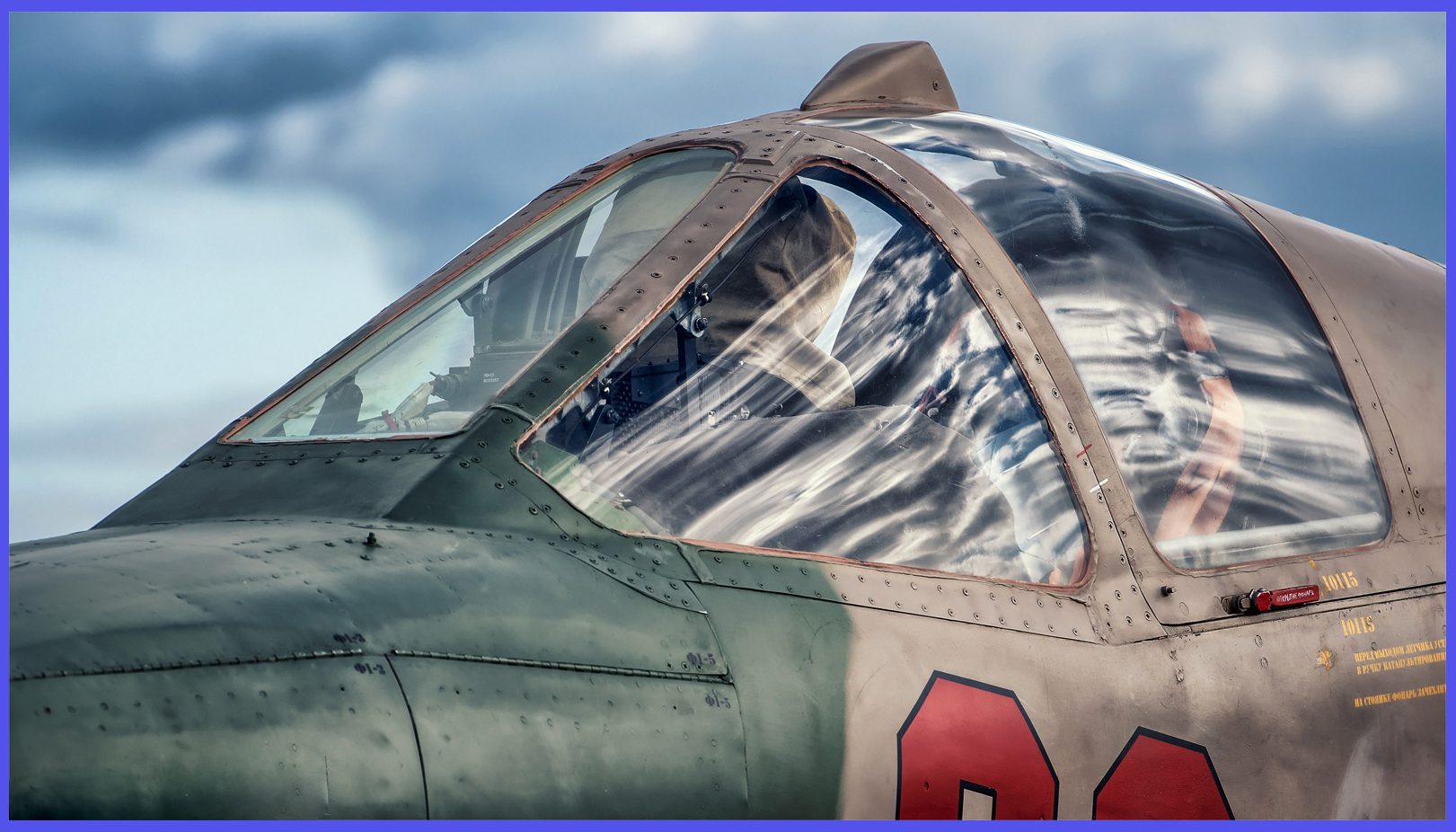
On the 22nd of February 1975, the inaugural prototype of this fighter jet completed its maiden flight. Following a rigorous testing phase, the aircraft entered series production in 1978 within the Georgian Soviet Socialist Republic, specifically in Tbilisi. Recent years have witnessed extensive utilization of the Su-25 in significant conflicts such as the Syrian Civil War and the Ukrainian Conflict. Remarkably, despite its age, the Su-25 endures as an unwavering and efficient ground-attack aircraft.
Let’s Explore this fighter which has been in service with various air forces around the world, including those of Russia, Ukraine, and Iran. It has seen action in several conflicts, including the Soviet-Afghan War, the Iran-Iraq War, and the Russo-Georgian War. The aircraft is known for its ruggedness and durability, as well as its ability to operate from rough, unpaved runways. The design team, led by Pavel Sukhoi, focused on creating an aircraft that was heavily armoured and armed, and capable of operating from rough, unimproved airfields close to the front lines.
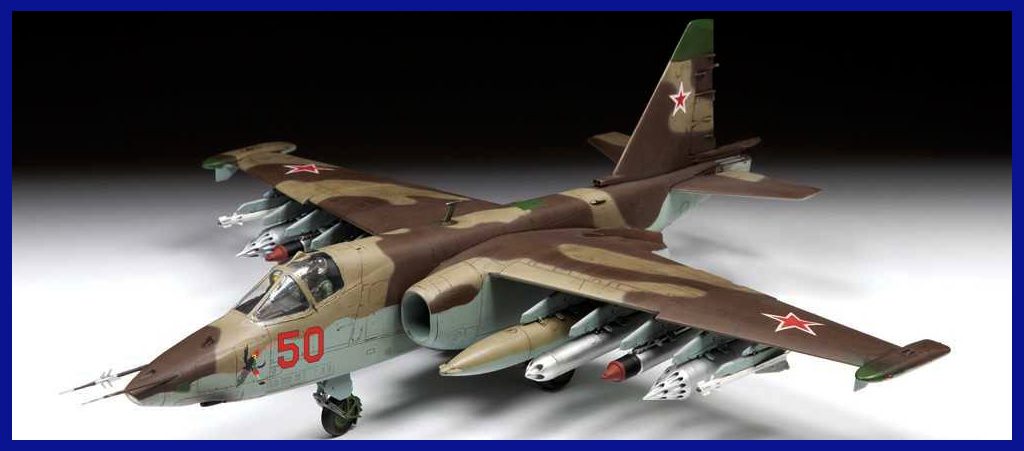
Over the years, the Su-25 has undergone several upgrades and modernizations. In the 1980s, an improved version of the aircraft, the Su-25M1, was developed with a more powerful engine and improved avionics. In the 1990s, the Su-25T and Su-25TM were developed with upgraded weapons systems and avionics, including the ability to use laser-guided missiles.
Since entering service over 41 years ago, the Su-25 has seen extensive combat experience in numerous conflicts around the world. One of its earliest deployments was during the Soviet-Afghan War, where it was heavily involved in flying counter-insurgency missions against the Afghan Mujahideen. The Iraqi Air Force also employed the Su-25 against Iran during the Iran-Iraq War from 1980 to 1988.
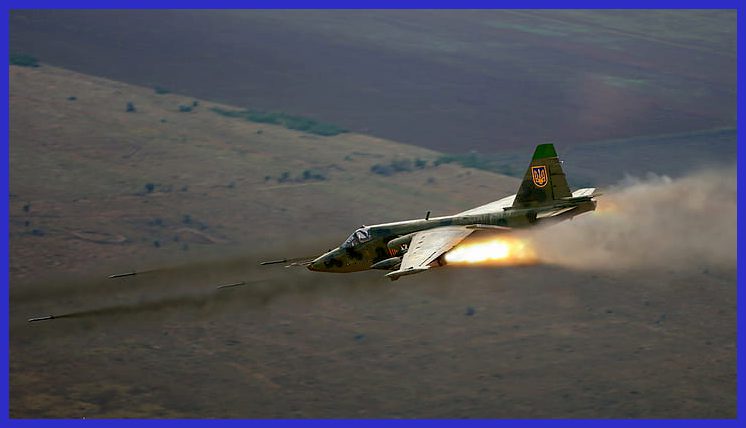
However, many of the Iraqi examples were later destroyed or flown to Iran during the 1991 Persian Gulf War. The Su-25 was also used by the Georgian Air Force during the Abkhazian war from 1992 to 1993 and by the Macedonian Air Force against Albanian insurgents during the 2001 Macedonian conflict. In 2008, both Georgia and Russia employed Su-25s in the Russo-Georgian War. Furthermore, African states, including the Ivory Coast, Chad, and Sudan, have used the Su-25 in local insurgencies and civil wars.
In recent times, the Su-25 has been actively utilized in various conflicts, including the Russian intervention in the Syrian Civil War, the clashes during the 2020 Nagorno-Karabakh War, and the 2022 Russian invasion of Ukraine, where it was employed by both sides. Despite its age, this aircraft continues to prove itself as a reliable and highly effective ground-attack platform, displaying its prowess and adaptability in diverse combat scenarios.
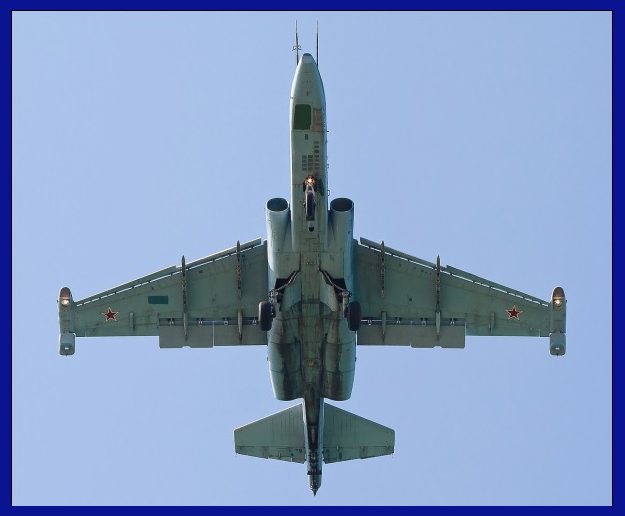
The Su-25 Frogfoot Design And Development Phase
To offer close air support for the Soviet Ground Forces, the Soviet Ministry of Defense decided to create a specialist shturmovik armoured attack aircraft in the early months of 1968. After considering the ground-attack aviation experiences of the 1940s, 1950s, and 1960s, this choice was decided. The Su-7, Su-17, MiG-21, and MiG-27 Soviet fighter bombers that were in service or being developed at the time did not match the army’s requirements for close air support.
Their exceptionally high flight speeds posed a formidable challenge for pilots to sustain visual contact with their targets, and the aircraft lacked essential armour plating to provide protection for both the pilot and vital equipment from potential ground fire and missile impacts. In response to these challenges, Pavel Sukhoi, along with a team of esteemed experts in the Sukhoi Design Bureau, embarked on the task of developing preliminary designs that carefully addressed these shortcomings. They collaborated with renowned institutions such as the Ministry of the Aviation Industry and the Ministry of Defense to gather invaluable insights and expertise for their endeavour.
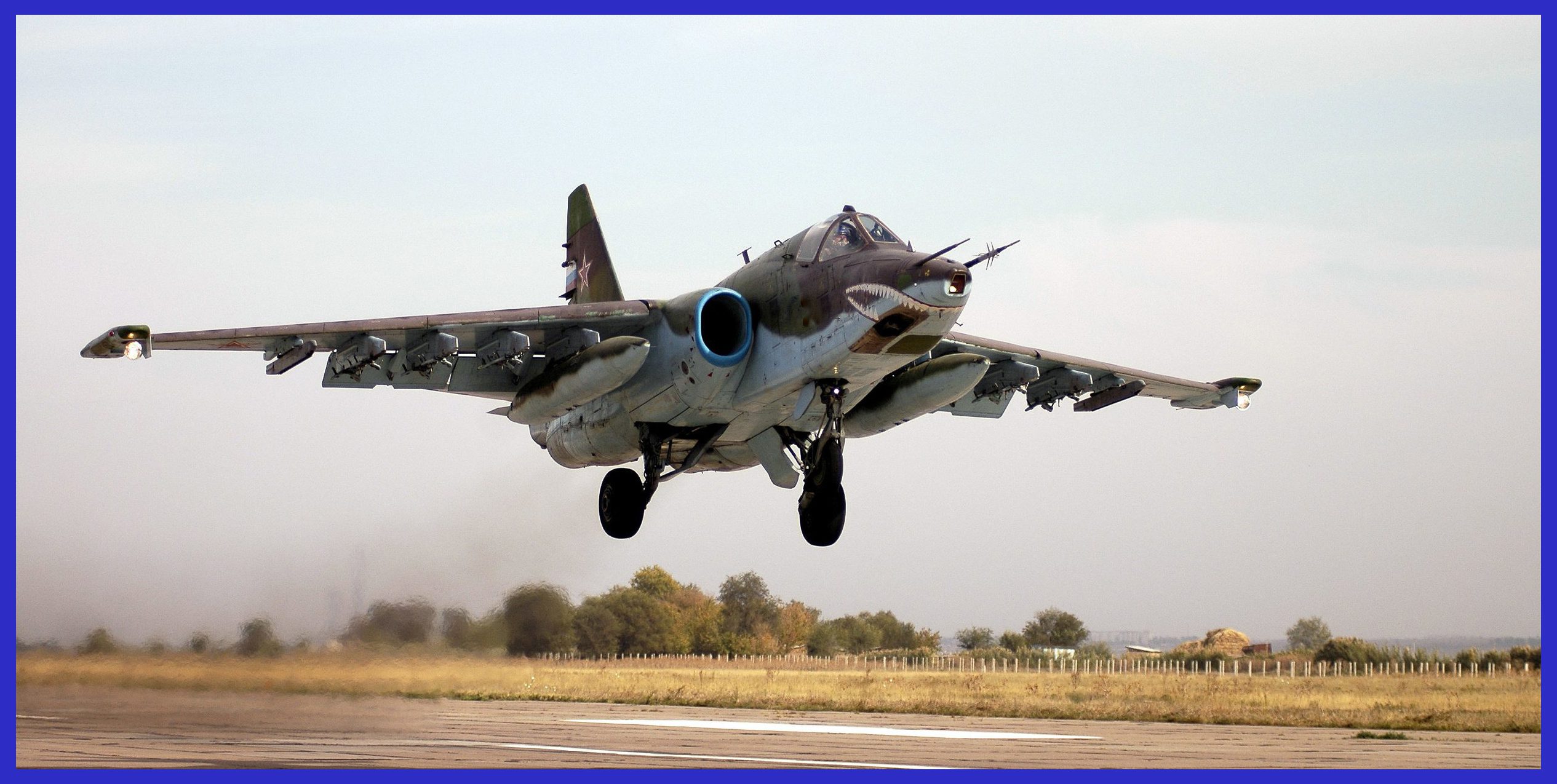
In March 1969, the Soviet Air Force announced a competition for designs of a new battlefield close-support aircraft. The participants in the competition were the Sukhoi design bureau, as well as the design bureaus of Yakovlev, Ilyushin, and Mikoyan. Sukhoi completed its “T-8” design in late 1968 and began work on the first two prototypes ( T8-1 and T8-2 ) in January 1972. The first airframe, the T8-1, was completed on May 9, 1974, or possibly in November of that year according to another source.
However, the plane didn’t make its first flight until February 22, 1975, after many test flights by Vladimir Ilyushin. The Su-25 outperformed its main competitor in the Soviet Air Force competition, the Ilyushin Il-102, and was chosen for series production by the Ministry of Defense.
During the late 1980s and early 1990s, various modifications of the Su-25 were introduced, including updated versions and specialized variants. The three most significant models were the Su-25UB dual-seat trainer, the Su-25BM target-towing version, and the Su-25T designed for antitank missions. Georgia and the Israeli firm Elbit Systems created a prototype for the Su-25KM in 2001, but this variant has not been widely used. As of 2007, the Su-25 was the only remaining armoured aircraft.
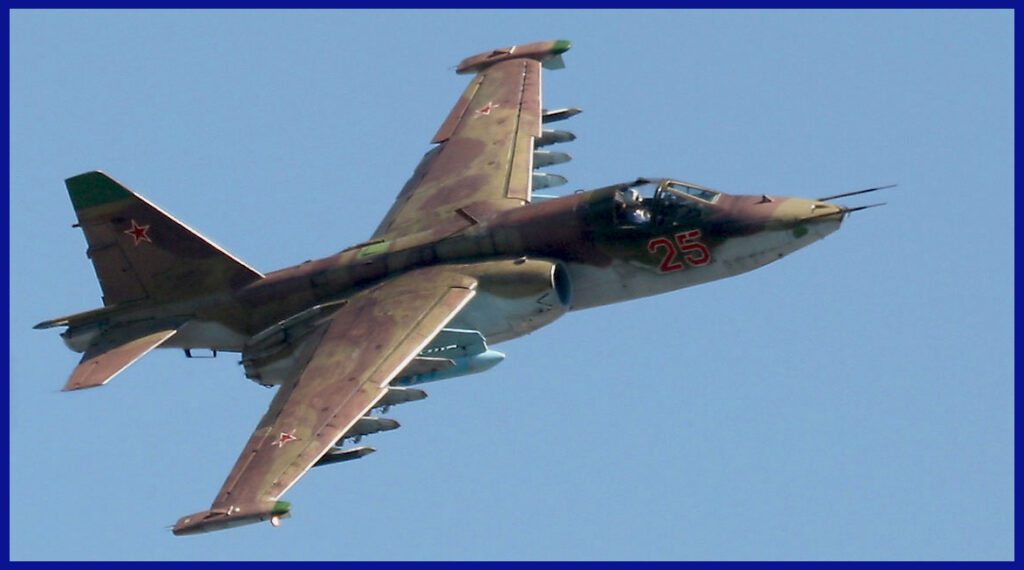
The Design Parameters Of The Su-25
All Su-25 models feature a metal cantilever wing with a high aspect ratio, moderate sweep, and high-lift devices. The wing is made up of two cantilever sections that are joined by a torsion box in the middle and form one piece with the fuselage. Each wing’s tip has a fairing that houses the air brakes. With the attachment points located on load-bearing ribs and spars, each wing contains five hard points for the carriage of weaponry. A two-section flap, an aileron, and a five-section leading edge slat are further elements of each wing.
The robust flaps of the aircraft are firmly secured by steel sliders and rollers, skillfully attached to sturdy brackets on the rear spar. Positioned near the wingtips, the trapezoidal ailerons are primed for quick and decisive manoeuvring. The ellipsoidal section of the semi-monocoque fuselage exudes strength, reinforced by a longitudinal load-bearing framework of longerons, beams, and stringers. The transverse load-bearing assembly of frames adds further structural integrity to this magnificent war machine. The one-piece horizontal tailplane, anchored at two mounting points to the load-bearing frame, provides stability and precision to every mission.
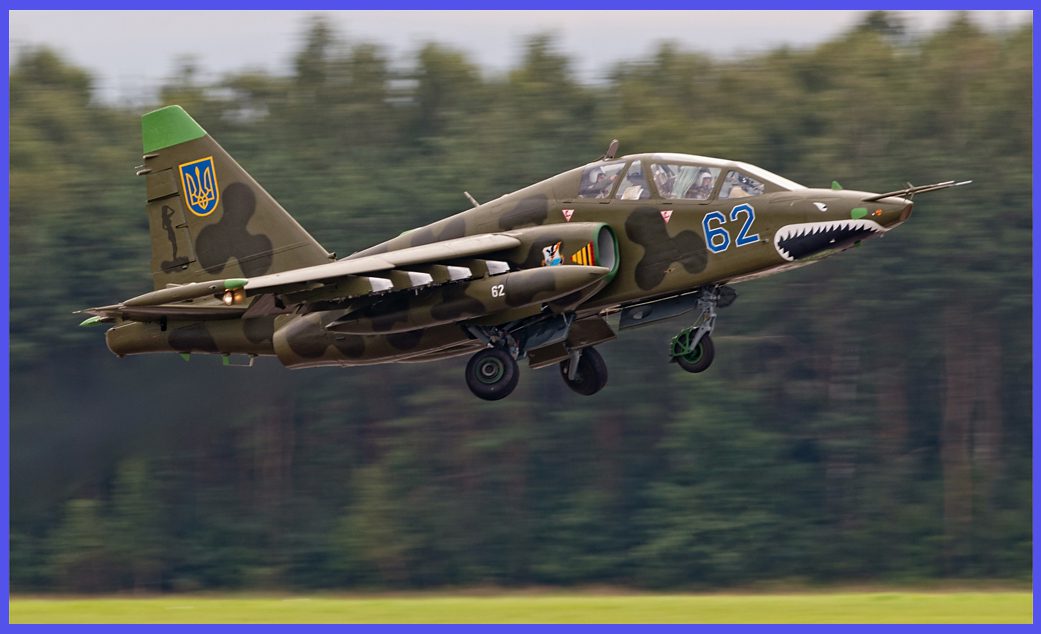
Overall, the design of the aircraft follows a standard aerodynamic configuration with a trapezoidal wing that is mounted on the shoulder and a conventional tailplane and rudder. To construct the airframe of the Su-25, different types of metals are used. These include 60% aluminium, 19% steel, 13.5% titanium, 2% magnesium alloy, and 5.5% other materials.
The GSh-30-2 autocannon, which is the primary armament of the aircraft, is housed in a compartment located directly beneath the cockpit. The autocannon is mounted on a load-bearing beam that is connected to both the cockpit floor and the forward fuselage support structure. The nose of the aircraft features two pitot probes that are used to measure the aircraft’s airspeed and angle of attack, and it is designed to hinge upwards to allow for easier access during maintenance and servicing.

An Armoured Cockpit
The aircraft is controlled by the pilot using a centre stick and left-hand throttles. To ensure the pilot’s safety, the cockpit is equipped with a two-piece canopy that opens to the right, providing them with visibility and access. Inside the pressurized and air-conditioned cockpit, ejection seats are installed, with the pilot seated on a Zvezda K-36D-3.5 zero-zero ejection seat. This advanced seat is capable of safely ejecting the pilot even at zero altitudes and zero airspeeds, providing crucial protection in emergency situations.
Located at the rear of the cockpit is a robust six-millimeter-thick (0.24 in) steel headrest, securely affixed to the rear bulkhead for enhanced protection. Constructed with safety in mind, the cockpit features a sturdy bathtub-shaped armoured enclosure crafted from welded titanium sheets, with strategically positioned transit ports in the walls. To support the pilot’s mission, the cockpit is equipped with state-of-the-art avionics, featuring a head-up display (HUD) and multifunction displays (MFDs). These advanced displays offer critical flight and mission information, empowering the pilot with essential data. Additionally, the cockpit is fitted with comprehensive controls for managing the aircraft’s weapon systems, communications, and navigation equipment, ensuring operational efficiency and versatility.
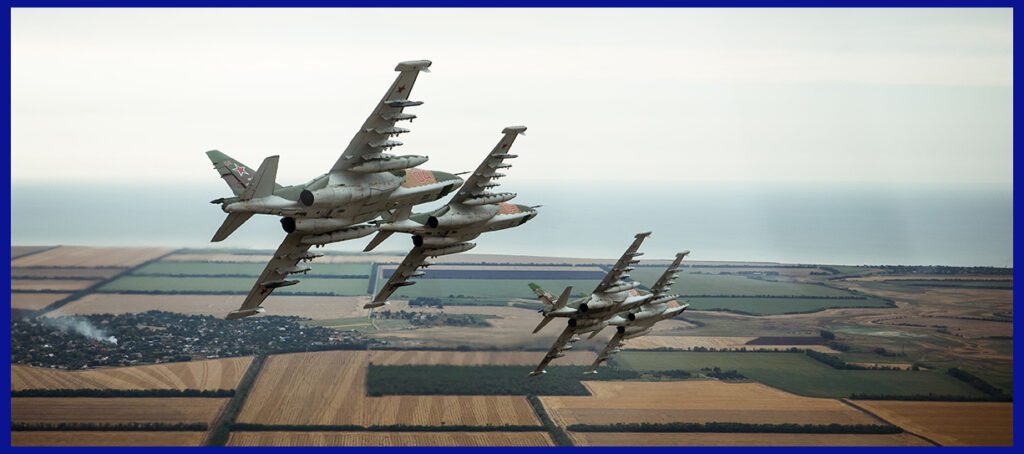
Sukhoi Su-25 Frogfoot Technical Specifications
- Pilot: 1
- Length: 50 ft 11 in ( 15.53 m )
- Wingspan: 47 ft 1 in ( 14.36 m )
- Height: 15 ft 9 in ( 4.8 m )
- Empty Weight: 9,800 kg ( 21,605 lb )
- Max Takeoff Weight: 19,300 kg ( 42,549 lb )
- Payload: 4,400 kg ( 9,700 lb )
- Hardpoints: 11
- Powerplant: 2 x Soyuz/Tumansky R-195 turbojet engine, 44.18 kN ( 9,930 lb ) thrust each
- Max Speed: 975 km/h ( Mach 0.80 subsonic )
- Combat range: 750 km ( 470 mi ) radius of action with 4,400 kg ( 9,700 lb ) of ordnance and two external fuel tanks
- Ferry range: 2,500 Km ( 1,550 miles ) without external fuel tanks
- Service ceiling: 23,000 ft ( 7,000 m )
- g limits: +6.5
- Armament: 1 × 30 mm Gryazev-Shipunov GSh-30-2 autocannon with 250 rounds. And different combinations of guided Missiles on its total 11 hard points. ( Like R-73, R-60 AAM / Kh-29, Kh-25 ASM / Kh-28 Anti-radiation missile ), S-13, S-24, S-25 Rocket pods and Bombs.

Furthermore, seize this exclusive opportunity to acquire the exquisite large-scale 1/72 premium die-cast models of the formidable Sukhoi SU-25M1 Frogfoot. These remarkable and iconic military jets, widely acclaimed as the epitome of advanced ground attack aircraft, are now available for purchase on AirModels with worldwide delivery. Do not let this chance slip away to own these exceptional and meticulously crafted models that flawlessly encapsulate the essence of aviation history. Click here now to secure your piece before the limited stock is depleted.
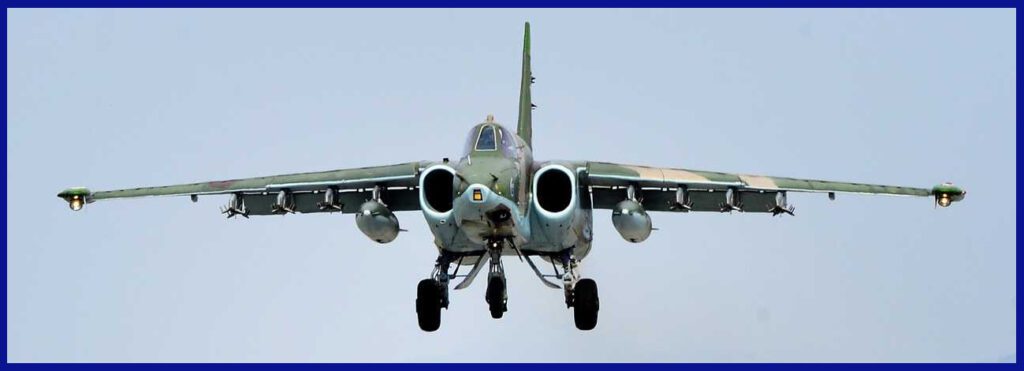
In conclusion, the Su-25 stands as a formidable ground attack aircraft, offering an array of impressive variants specifically designed to excel in diverse combat scenarios. Powered by robust engines, advanced avionics, and potent armament, this aircraft possesses the capability to deliver a powerful blow to enemy ground forces. Its remarkable range and endurance, coupled with the ability to operate from unimproved runways, underscore its high level of flexibility and adaptability across various environments and conditions.
Whether providing essential close air support to ground troops or engaging heavily armoured targets deep within enemy territory, the Su-25 remains a force to be reckoned with—a true symbol of military might and technological innovation.

Important Announcement for Our Valued Readers!
After an article is published, it is possible that updates or changes may have occurred beyond the time of publication. Therefore, it is important to be aware that certain information in the article might be outdated. To ensure the most accurate analysis, it is highly recommended to verify the content with the latest sources available.
However, we are dedicated to delivering outstanding articles on military products and global updates. Maintaining quality and smooth operation requires resources. Your support sustains our efforts in providing insightful content. By purchasing high-quality products through our affiliated links, you help us keep our platform alive and acquire top-notch items. Your unwavering support is invaluable and inspires us to strive further.
We welcome your suggestions and requests for more information, as we value feedback from our readers. If there’s specific defence material or equipment not covered on our site, please share your request in the comments. We’ll strive to research and provide the required information. We sincerely thank you for your unwavering interest in our website, and we eagerly anticipate hearing from you! Enjoy your reading experience!
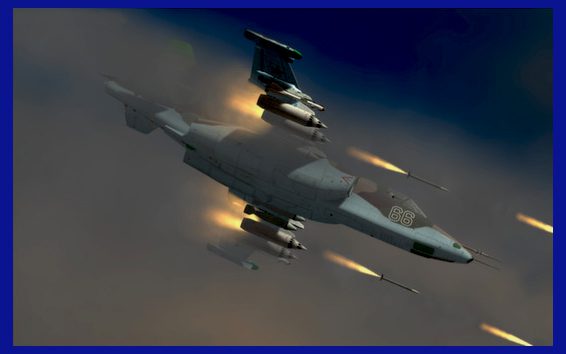
2 thoughts on “Let’s Explore The Rugged Fighter Jet Sukhoi Su-25”